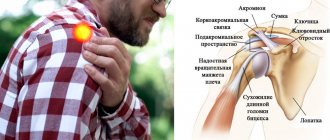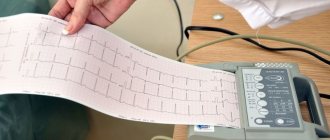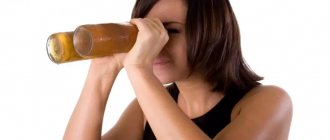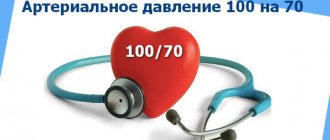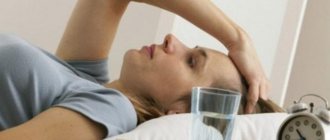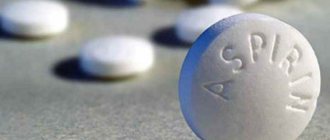Author Elena Orlova
11/22/2019 21:05 (Updated: 05/21/2021 12:02)
Health
A heart attack is a condition that can affect anyone, regardless of their age or gender.
Most people mistakenly believe that heart attacks only occur in adults and not in children and teenagers.
Although most heart attacks often occur in older people or overweight people, nowadays even teenagers and children are falling prey to this condition. But that doesn't mean every child with chest pain will have a heart attack. Before jumping to any personal conclusions, it is important to consult your doctor and take the right treatment.
Causes of pain
If you take all the clinical cases and add a little theoretical knowledge, you can find out why the child has an unpleasant sensation in the heart area.
- Functional pain. Most often observed in primary schoolchildren and adolescents. At this time, the final formation and growth of organs occurs, and hormonal fluctuations occur.
- In adolescence, the symptom appears against the background of vegetative-vascular dystonia, due to pressure fluctuations.
- Cardialgia develops against the background of a viral or bacterial infection. With such diseases, the load on the heart increases (pulse increases, temperature rises). But in this case, I cannot exclude such a complication as myocarditis.
- I often met in practice children who complained of pain in the heart, but in fact they were diagnosed with pathologies of the spine, problems with digestion, and bile ducts. And the sensations on the left side of the chest were simply irradiation from the main source.
- The left chest may hurt after an injury or bruise.
- Finally, unpleasant sensations can be associated directly with diseases of the heart muscle, pericardium and blood vessels. In this case, a complete examination of the child’s heart is necessary (taking a dynamic cardiogram or monitoring it, echocardiography, general blood tests and biochemistry).
Obsessive neuroses
In most cases, the problem of obsessive-compulsive neurosis and tics is solved by play psychotherapy or a course of medical treatment, and most often by a combination of drug treatment and psychological work with suppressed nervous tension in the child.
Obsessive neuroses in children manifest themselves in the form of obsessive movements and thoughts. Obsessive states (obsessions) manifest themselves as irresistible and involuntarily arising thoughts, fears, and, as a result, obsessive movements.
Intrusive thoughts
- when a child fears for the health and safety of himself and his family
- constantly thinks or imagines that something bad might happen to them
- always remembers negative events that happened to him or his family in the past
Typical obsessive mental actions
- reading license plates, signs, operations with numbers and letters from license plates and signs
- counting lamp posts, houses, lawn fences, etc.
- constant search for “favorite” and “unfavorite” letters and numbers
Obsessive movements and actions.
The scope of their manifestations is very extensive. This could be a nervous tic in a child, or obsessive movements. The most typical obsessive movements and actions in children:
- biting nails and lips
- hair pulling
- thumb sucking, sucking or biting a pencil, pen, button, edge of clothing
- coughing, grunting, or making noises
- twitching of limbs
- blinking and/or stereotypic eye movements
- circling
- tapping, clapping
- rocking
- squatting, limping when walking
- rubbing the body or objects
- shaking and shaking hands and objects
- jumping and skipping for no reason
- muscle contractions of the arms and legs, as well as the face.
Typical complex ritual actions
- Children can walk on certain floor tiles
- walk around, twist, stroke the object a certain number of times
- jump up and clap your hands, pronounce phrases, etc.
Also, neuroses can have a different course:
- episodic
- chronic
- progressive
Neurosis in a child can have different causes
. The most common is the presence of any mental trauma in the child, as well as the presence of emotional factors. Such as: a tense and conflictual situation in the family, incorrect and too harsh and authoritarian upbringing of children.
Often this list also includes physiological reasons: heredity and genetics, previous diseases, physical overload of the child, lack of sleep.
One way or another, all this is due to the fact that the child has increased arousal in certain areas of the brain. Basically we are talking about dysfunction of the subcortical nuclei of the brain, which are responsible for posture and facial expressions, muscle tone and global motor acts. The child is forced to somehow relieve this excitement. Thus, this discharge occurs precisely through actions.
These may be: tics (the child twitches or jerks with some part of the body), fast stereotypical movements, there may be obsessive postures, obsessive movements; the child may sit down, jump, make some sounds, pronounce words or even swear words (with Tourette syndrome). Very often such manifestations are not taken seriously in the initial stages.
Tourette's syndrome is a genetically determined condition associated with obsessive-compulsive disorder and tics, or stereotypical tic-like movements.
Also, neurosis-like obsessive states are largely provoked by chronic streptococcal infection with an increase in antistreptolysin O (ASLO) in chronic tonsillitis, the so-called PANDAS syndrome, ongoing neuroinflammation with an increase in markers such as NSE and S100 protein. We also often see such manifestations in children who are carriers of neuroinfections, that is, infections that have a toxic effect on the nervous system.
EEG (electroencephalography) for children at the Echinacea clinic
We advise you to contact a child neurologist, child psychiatrist and allergist-immunologist. For convenience and coordination of assistance to the child, we practice a consultation of all three specialists. Thanks to this, the appointments are more informative, and the effect of the prescribed therapy occurs faster.
Obsessive neurosis responds well to treatment in the early stages, especially in preschool age.
As for Tourette's syndrome, even if there is a genetic predisposition, this syndrome can become silent. After all, until the debut of Tourette syndrome, the child lives with the same genetic makeup, but there are no tics or vocalisms. This is not only a matter of genetic predisposition to Tourette's syndrome, but also related problems and the current state of the child's health. Working with provoking factors (obsessive-compulsive disorder, infections, concomitant inflammatory diseases, sleep disturbances, high levels of anxiety, etc.) usually leads to gradual improvement, often until the complete cessation of tics and vocalisms.
We widely practice play therapy for the treatment of obsessive neuroses in children
Features of symptoms at different ages
For each child, depending on his age, there are specific clinical manifestations, and parents need to know about this. Only in this case is it possible not to miss pathologies, the treatment of which should begin immediately, without waiting for irreversible consequences.
In infants, preschoolers and primary school students
When an infant has a heartache, he will not be able to talk about it. But if the baby becomes lethargic, has difficulty latching on the breast, is choking, and at rest the pulse remains rapid, then this condition cannot be ignored. There may be a congenital defect or myocarditis.
Up to 7 years of age, if a child complains of pain in the heart, then most likely the cause is the functioning of the internal organs (this happens when there is congestion in the gallbladder). Rapid growth and development of the vascular, respiratory and digestive systems may be associated with stabbing, but short-lived sensations.
Sometimes pain behind the sternum occurs during physical activity. After 11 years of age, pain in the heart area in children is often caused by pressure fluctuations due to vegetative-vascular dystonia. They do not depend on the position of the body and occur even in complete rest. But they often intensify under the influence of nervous tension or fear. In such cases, it is necessary to consult a child psychotherapist.
Quite severe pain accompanies changes in the spine. Sitting at a desk for a long time and at home at the computer, and lack of physical activity, which I often observe in modern children, lead to curvature. Pinched nerve bundles very reliably simulate cardialgia.
The child often begins to feel pressure or stabbing in the area of the heart as a result of a stressful situation. This is how the nervous system reacts to moving and a change of environment, a new school, or separation of parents. In this case, complaints arise immediately or some time after stress. They should not be ignored; it is necessary to explain the problem that has arisen in the family on your own or seek help from a psychologist.
Such children are often brought to the local doctor with complaints of pain, poor appetite, and sleep disturbances. In such cases, doctors like to diagnose “VSD”. The whole truth about this syndrome and an expert view of the problem are available in the video at the link below.
In teenagers
Now let's figure out why a child may experience cardialgia during adolescence. The restructuring of all organs and systems and hormonal surges make him very susceptible to all traumatic situations. Therefore, the problem may arise during the exam, under the influence of strong negative emotions.
Chest pain in children
General information
Adults often associate chest pain in a child with heart ailments .
But in reality this is far from the case. Studies conducted in the United States have shown that in adolescents and young children, chest pain is not associated with heart disease in 99% of cases. This study included more than 3,700 children from Boston with heart pain, patients at Boston Hospital, and only 1% of them were diagnosed with cardiovascular disease. What are the real causes of chest pain in children and what can be done about it?
You may be interested in: Chest pain when coughing Pain in the sternum
Causes of chest pain in children
The study we wrote about above involved children whose average age reached 14 years. 99% of them were diagnosed with bone tissue diseases , as well as diseases:
- musculoskeletal system;
- digestive system;
- central nervous system (CNS).
Some children experienced chest pain due to uncontrolled use of medications that caused allergies . And only 1% of children experienced chest pain due to cardiovascular problems. Therefore, doctors strongly advise parents who find chest pain in their children to first do an ECG.
This will immediately eliminate the risk of cardiovascular disease or confirm heart problems. And then you need to navigate according to the picture of the disease. This will make it possible not to waste time on taking medications for cardiovascular diseases. This time will be useful to identify the real cause of chest pain in children. So, the true causes of chest pain in children may be:
- Psychogenic pain;
- skin damage or disease;
- pain due to muscle dysfunction;
- respiratory system disorders;
- cardiovascular diseases;
- lesions of the gastrointestinal tract.
First, you need to ask the child in detail where exactly the pain occurs, because young children very often indicate different places. Therefore, pain in the pit of the stomach, indicating diseases of the digestive system , can easily be confused with pain in the chest - the child may call both parts of the body the chest. Also ask your child about the nature of the pain that bothers him. Let's look at each of the causes of chest pain in a child in more detail.
Pain due to skin diseases
Pain due to diseases or damage to the skin can bother a child if he has herpes or shingles. This disease tends to affect the skin with rashes , sores or blisters. And then the child complains of burning pain in the chest. They may be accompanied by fever or lymph nodes that are significantly enlarged.
Shingles , or herpes, is a viral disease, which is also infectious, that is, it is transmitted from child to child. To cure it, you need to call your local doctor and follow the treatment regimen that he prescribes.
Diseases of the musculoskeletal system
Chest pain in a child due to diseases of the musculoskeletal system can be quite severe and acute. Sources of pain can be changes in the vertebral processes after injury, pain due to damage to cartilage in the spine, rheumatoid arthritis, tuberculosis. All these diseases lead to pinched nerve roots, and this is very painful. It is necessary to take the child to a rheumatologist for diagnosis and treatment.
Respiratory system diseases
Chest pain in a child can most often occur due to damage or inflammation of the lungs. This respiratory organ is surrounded by the pleura, a membrane that lines the chest cavity. When the pleura is inflamed, its leaves (it consists of very thin leaves) rub against each other, and this causes severe chest pain in the child. They are very difficult to endure, the pain intensifies even more during deep breathing and can radiate to the shoulder joint.
A child may experience similar pain when pneumonia has worsened, the lungs are in serious condition, they are inflamed and affected by the virus. In this condition, self-medication is unacceptable. You need to immediately call a doctor and treat the child in a hospital, usually with antibiotics .
Cardiovascular diseases
Cardiovascular pain in a child’s chest is one of the most dangerous types of pain. They can occur with various diseases of the heart and blood vessels, in particular, rheumatism , ARVI (acute respiratory infections), which cause inflammation of the lining of the heart - the pericardium, or inflamed heart muscles (a disease called myocarditis ).
Cardiovascular diseases not associated with myocardial infarction or angina pectoris can be recognized by dull and nagging pain; such pain can radiate (spread) to the neck or shoulder. If the heart and blood vessels are not normal, this is a great danger for the child. You should consult your doctor immediately. He will prescribe treatment depending on the nature of the disease.
Digestive system diseases
Chest pain in a child due to diseases of the gastrointestinal tract can be very severe and indicate serious health problems. These may include congestion in the digestive tract, gas reflux disease (heartburn), inflammation of the esophagus, as well as poisoning with substances that can irritate the delicate mucous membrane of the esophagus or stomach.
Diseases of the digestive system that cause chest pain in a child may be a stomach or duodenal ulcer, a hiatus hernia, or a foreign body that the child has swallowed (for example, a bone). Such pains can be recognized by their nature: they become stronger when swallowing, in a lying position or when the child leans forward. Accompanying symptoms are difficulty swallowing , vomiting blood, stool with black discharge, and increased salivation.
You need to immediately call an ambulance and take the child to the hospital. First of all, he needs to have an esophageal endoscopy (examination of the esophagus using a computer scan and an instrument called an endoscope). Next, the doctor will prescribe treatment depending on what diseases the child suffers from.
Psychogenic chest pain
Psychogenic chest pain can begin if the child is not sick, but is experiencing a state of acute stress. Then muscle tension appears in the chest, and the child complains of chest pain. The child may also worry about the condition of a person close to him, for example, his mother, and imitate chest pains that she suffers from. Psychogenic pain can be determined by the time when it occurs. As a rule, these pains bother the child only when he is awake, and in a state of sleep or while the child is engrossed in a game or an interesting book, the pain goes away.
It is necessary to give the child the opportunity to rest more, play, and be in the fresh air. If chest pain does not go away, you need to show the child to a neurologist and psychologist.
Sudden severe stabbing pain of unknown etiology can occur in a child, most often after eating or during severe physical stress. This pain may be accompanied by contractions in the chest area (attacks of pain), localized in the upper abdomen or lower chest. As a rule, such pain is more often localized on the right. This pain may be caused by strained ligaments between the abdominal lining (peritoneum) and the diaphragm.
Pain of this nature should go away in a child after he has rested and calmed down. The child should lie down, the peritoneal ligaments will relax and then all the pain will go away.
Chest pain due to muscle problems can occur after injuries, muscle strains, bruises, and also due to viral infections in the muscles. The latter disease leads to muscle inflammation, which is called viral myalgia. It is characterized by the fact that the child’s muscles in the chest area become very painful, and this pain comes unexpectedly, it is strong, and can be felt even with light pressure with your fingers. As a rule, this is the only area of pain; there are no other abnormalities in the child’s condition.
For bruises and sprains, you need to alternate heat and ice (15 minutes each). Warm compresses can be salt heated in a frying pan or a warm heating pad. You can also heat a woolen scarf on a warm radiator and apply it to the child’s sore chest.
If your chest hurts a lot, you can give it an anti-inflammatory and pain reliever, such as ibuprofen. You can also give your child Panadol - it relieves pain and inflammation well.
Character of chest pain in a child
If the pain gets worse with movement, it is most likely caused by an injury or muscle strain. It could also be a muscle strain or inflammation. Parents should pay attention to these symptoms even if there are no bruises or other signs of injury on the child's chest. An additional symptom is pain with a light touch, breathing, or coughing.
If your child's chest pain is concentrated in only one place that constantly hurts, it may be the result of a rib fracture . Additional symptoms are sharp pain when moving or touching, and this pain is in the area where the ribs are located. This kind of pain doesn't go anywhere anymore.
Severe and sharp pain in the child’s chest, as if behind the breastbone, from behind, is a symptom of a sore throat or a cold. Such pain can be caused by a disease of the trachea, in particular, its inflammation. The microorganisms that cause sore throat and tracheitis are the same. An additional symptom of this disease is a dry cough , pain that increases with deep breathing.
Pain in a child's chest in the form of a burning sensation that occurs after eating is a sign of a disease of the digestive system, in particular the stomach. This pain is caused by acid that rises from the stomach back into the esophagus. There are children who especially often suffer from heartburn and high acidity. To avoid this condition, you do not need to overeat and bend over after eating, but sit straight. If these simple remedies do not work, you need to take your child to the doctor.
Chest pain in a child when coughing is a sign of a disease of the respiratory system, in particular pneumonia. If a child coughs frequently and for a long time, his intercostal muscles , causing them to become inflamed and painful. The pain is aggravated by palpation of the chest. These pains will quickly go away as soon as the cough itself goes away.
Whatever the pain in the child’s chest, you should not lose sight of this symptom, because it can be a signal of serious illness. In order not to be convinced of the presence of these diseases in practice, you need to pay attention to them at an early stage in order to diagnose and treat them in time.
Nature of pain and pathology
It is important to consider in more detail the main causes of heart pain, which are associated with pathological processes in the body. The strength and severity of sensations, the time of its appearance and the provoking factor play an important role in diagnosis.
Stitching pain usually occurs in the following cases:
- pressure changes due to dystonia;
- neurosis;
- penetration of air into the pleural cavity of the left lung;
- pericarditis;
- rachiocampsis;
- heart disease, myocardial dystrophy, coronary blood flow disturbance.
Pressing pain in the left chest often accompanies severe abnormalities and may be a sign of:
- pericarditis;
- myocardial ischemia;
- aneurysms;
- congenital abnormalities in the structure of valves and coronary vessels.
It is important to understand that children who complain of heart pain are not always just trying to attract the attention of their parents. It cannot be ruled out that the child is telling the truth. In this case, it is best to play it safe and undergo a full examination.
Symptoms or signs of a heart attack in teenagers
Some signs may be noticed several days before severe chest pain is felt, including:
- Difficulty breathing.
- Chest discomfort, cough that does not go away.
- Nausea, upset stomach, abdominal pain, heartburn.
- Pain that spreads to the arm.
- Dizziness.
- Sore throat or jaw, vomiting.
- Snoring, cold sweat.
- Arrhythmia.
- Swollen legs, feet and ankles.
During a sudden attack, it is important to take immediate action, call an ambulance and take the teenager to a doctor.
Ambulance
Case from practice
Parents came for a consultation with a 13-year-old child who complained of stabbing pain in the heart area.
Appeared several months ago; previously I was ill only with colds. When collecting anamnesis, it became clear that an unpleasant sensation appears after eating, especially when eating fatty and heavy foods. It is accompanied by symptoms such as nausea and sometimes vomiting. No abnormalities were found on the ECG. A consultation with a gastroenterologist and an ultrasound of the liver showed a violation of the outflow of bile from the bladder and its inflammation. The boy was referred to a gastroenterologist.
Hyperactive child and restless child. Increased excitability in a child
Symptoms and causes.
A hyperactive child cannot sit for a long time and do work associated with a static body position, often screams loudly and violently expresses emotions, has an attention deficit that does not allow him to concentrate on one thing, and is forced to discharge accumulated tension through physical activity.
That is, in the child’s nervous system, excitation significantly dominates over inhibition. The danger of increased excitability is a decrease in learning ability and, as a result, a child falling behind his peers in development.
It is important to understand the source of increased excitability and restlessness.
Therefore, the first thing we will offer you is to find out the reason for what is happening. There are three main options:
- This is your child’s normal natural temperament
and the intervention of a psychiatrist or doctor is not required. The child is mentally healthy and psychologically well-being. In this case, we will give you some recommendations, and you and your child will become noticeably more comfortable. - There is some psychological problem
that increases the child’s level of emotions, anxiety or aggression, for example.
Emotion requires release (discharge, realization), hence increased excitability and restlessness. The child is mentally healthy and does not need any medical treatment.
These kinds of psychological problems are quite easily diagnosed during a conversation with the child and parents, and then gently corrected. - Increased excitability and restlessness are a consequence of a medical problem.
We can talk about, for example, increased intracranial pressure, chronic inflammation somewhere (adenoids, tonsils), neuroinflammation, the consequences of birth hypoxia or trauma, childhood neurosis, a latent form of epilepsy. We also encounter more serious problems in our practice, such as autistic disorder and childhood schizophrenia. In this case, it is very important to find the true cause of what is happening, and only then will the treatment work effectively and safely.
Hyperexcitability, restlessness and hyperactivity as character traits
. If we talk about increased excitability and restlessness as characterological characteristics, this is possible if the child is extroverted and temperamental by nature. Or the child may copy this style of behavior from one of the family members. But we can talk about the norm only if this type of hyperactivity does not lead to health problems and if the child is not so excited that he stops sleeping normally, begins to get sick often, or lags behind in general development. Having severe disinhibition and excitability, the child cannot concentrate and master the skills that he is supposed to master by age.
Hyperactivity test
Active attention deficit:
1.Cannot concentrate on one thing, it is difficult to maintain attention;2.May forget what he was assigned or asked for;3.Likes to start a new activity, but cannot finish it;4.Cannot organize clearly his activities and maintain a routine; 5. It is difficult to maintain order, he may lose all his things; 6. Does not like monotonous tasks that require mental effort and attention; 7. May forget what he was assigned or asked for; 6. Doesn't respond immediately when approached.
Motor disinhibition:
1. Often moves restlessly (runs, jumps, climbs somewhere, fidgets in a chair and at the table); 2. Takes a long time to fall asleep and sleeps poorly, may wake up often4. Likes to talk a lot and uncontrollably.
Impulsiveness:
1. Poor control of one’s behavior; 2. Can’t regulate one’s actions and most often does not follow rules; 3. Poorly concentrates attention; 4. Can’t wait for something to finish or reward; 5. No precise line of behavior, strong variability in results and states; 6. May begin to answer without listening to the question; 7. Often interferes in someone else’s conversation and interrupts it; 8. Doesn't know how to wait, can run without waiting for the start.
If you find at least six of the listed signs in a child under the age of 7, we can assume that there is a tendency to hyperactivity. But only a specialist can make an accurate diagnosis. Where to start and who to contact with an overly excitable child?
If we are talking about a hyperactive, excitable and restless child, then it all starts with a detailed identification of the reason for what caused the child’s nervous system to remain in a state of excitement for such a long time. Most often in such cases, we recommend starting with an appointment with a pediatric neurologist and/or a child psychiatrist, and we also suggest getting a joint appointment with these two experts. This makes it easier and faster to determine the cause of increased excitability, to avoid treatment that is unnecessary in many cases, or to select exactly the treatment that your child needs. Based on the results of the initial examination, we can recommend additional laboratory and instrumental studies. We can also save you time and send a laboratory examination form to your email address for your initial appointment; to do this, you can fill out the “ask a doctor a question” form
.
Expert advice
If a child begins to complain of heart pain, I usually advise calming down and trying to figure out what it might be related to. First you need to put him on the bed, then sit him down, ask him to bend over, and take a deep breath. Cardiac pathology usually does not depend on changes in body position. If a child talks about increased pain when bending over, most likely we are talking about a pinched nerve root in the spine due to its structural disorders. Pain when breathing can occur with inflammatory pathology of the respiratory system. But when a child often has heart pain, the discomfort is burning or pressing, what to do in this case? It is important not to delay diagnosis and treatment. For this purpose, you should contact your pediatrician. After the necessary examinations (ECG, X-ray, EchoCG), it will be possible to determine the causes of the symptoms and take measures. You should consult a doctor immediately if heart pain in children is accompanied by:
- high temperature;
- cough, shortness of breath;
- severe weakness;
- lack of appetite;
- nausea and vomiting;
- constipation or diarrhea;
- arrhythmia;
- blue or pale skin;
- increase or decrease in pressure;
- deterioration of the condition after physical activity.
Dear parents, how many of you have encountered similar problems when a child complained of heart pain, and how were they solved in practice? Share your experience - it may help others.
How often does your heart hurt?
What's happened?
You need to immediately reassure and say that the heart itself does not hurt in children, and if this happens, then this is a very rare case, because heart attacks or ischemic processes in the tissues of the organ are not typical for the child.
In the latter case, the nature of the pain will be retrosternal, and small patients often point to the area under the left nipple. But the most important thing is that even when there are heart problems, children, as a rule, do not complain of pain.
Nevertheless, parents should be attentive and know when to doubt the health of their beloved child.
You can assume that the motor in the chest may be slipping based on the following signs:
- the child cannot perform work that was previously familiar to him or her on an equal basis with peers;
- weakness;
- shortness of breath, but not cases in which it is not possible to make a normal entrance, after which there is not enough air;
- swelling of the limbs;
- heart rhythm disturbances.
- pain appeared during or after an infectious disease.
Often the diagnostic problem is that a small patient cannot correctly describe or determine the nature and location of pain
In the latter case, the reasons for concern are not unfounded and require immediate action. If there was a viral or bacterial disease (influenza, ARVI, tonsillitis, pneumonia, scarlet fever or others), a temperature tail remained.
Relapses and incomplete recovery could occur. There is a danger if complaints arise a month after recovery. In such situations, detailed diagnosis and determination of the cause are required, because myocarditis or rheumatism may develop.
Important. In all cases, parents are required to contact a pediatrician or pediatric cardiologist to rule out serious problems.
Increased anxiety in a child
The main reason
Anxiety in a child is the constant presence of the nervous system in a protective adaptive reaction to external situations and circumstances that the child for some reason assesses as dangerous (stress reaction). The child may not be aware of them, since he grows up in them from birth, and he is used to them, but subconsciously feels restless and unsafe.
Common symptoms of increased anxiety in a child:
- Anxiety in a child is often manifested by excessive attachment to the mother, since for the child she is the natural source of calm.
- Increased anxiety may be accompanied by excitability and hyperactivity, or, conversely, exhaustion of the nervous system, depression and apathy of the child. The brain cannot maintain anxiety and excitement indefinitely and quickly becomes exhausted.
- Very often, excessive anxiety is accompanied by immune depression (secondary immune deficiency due to stress) and frequent illnesses. For example, a child is highly susceptible to colds, brings all the infections that appear there from kindergarten, and spends a long time at home undergoing treatment.
- An almost obligatory and most common manifestation of increased anxiety is sleep disturbance; the child has trouble falling asleep and often wakes up. Or, at first glance, he sleeps enough and a lot, but does not get enough sleep and gets up in the morning in a bad mood.
- Fears (invents and endows safe things with dangerous properties).
First of all, it is necessary to understand in which area the causes of the problem lie. In psychological or medical
.
- Increased anxiety as a psychological problem.
- Anxiety in a child due to medical problems. This could be long-term brain damage during childbirth, hypoxia, asphyxia or birth trauma, after which the brain itself begins to generate anxiety in response to external circumstances. This may be increased intracranial pressure; in more complex situations, the causes may be autistic disorders, childhood psychoses, or even schizophrenia. And in order to help a child as effectively as possible, you need to accurately determine the nature of anxiety.
